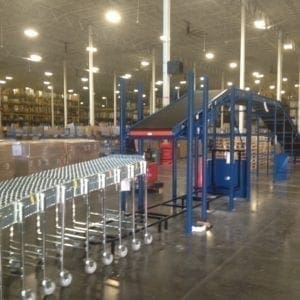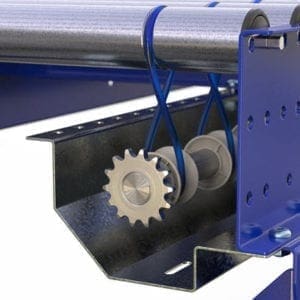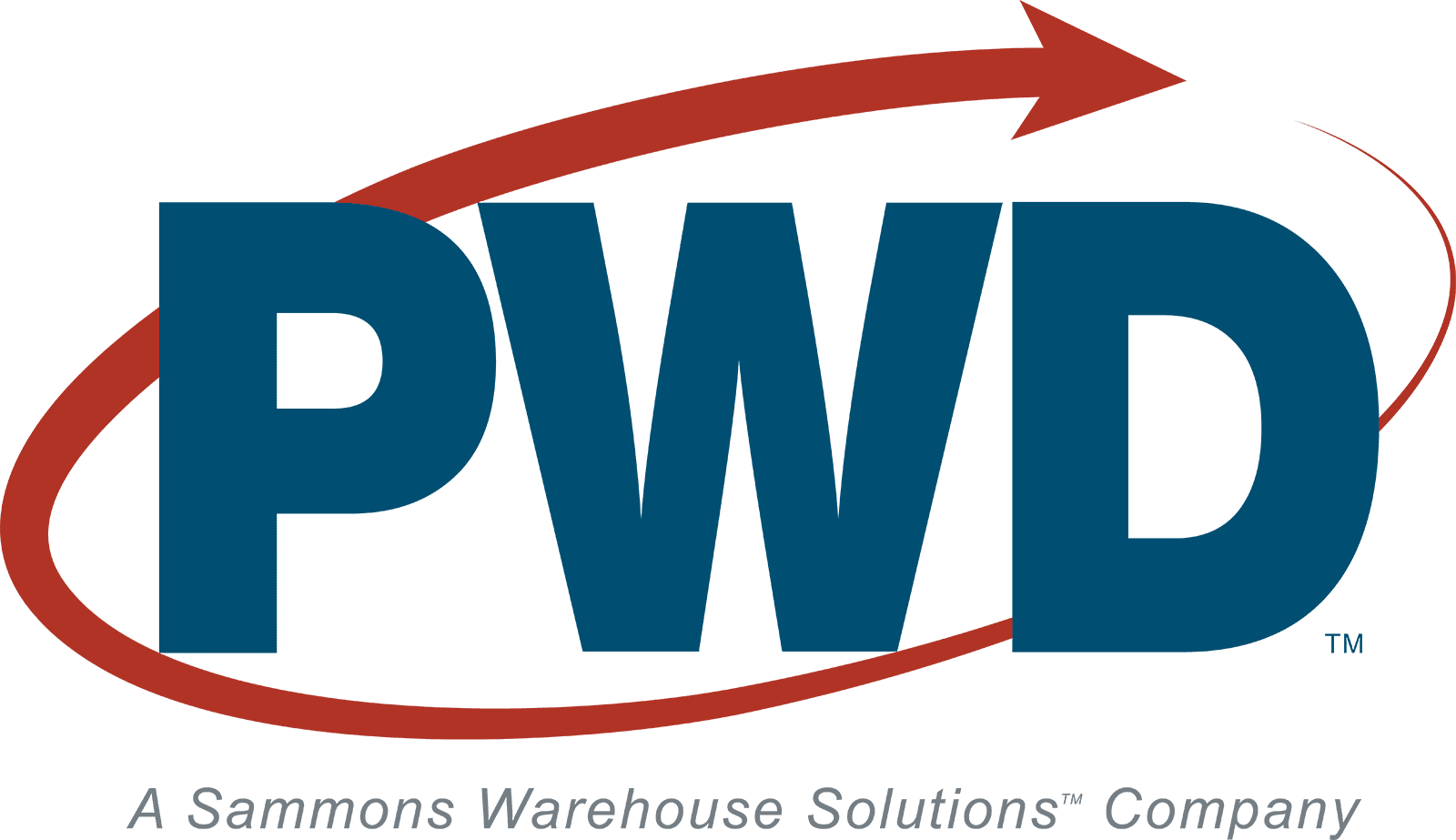Conveyor System Types: Streamlining Warehouse Operations
-

Gravity Conveyor Installation of Systems for Speeding Up Your Warehouse Operations (9)
-

Handle Materials Efficiently with Flexible Conveyor Systems (3)
-

Handle Materials with Precision By Installing Line Shaft Driven Conveyors in Your Warehouse (1)
-

Motorized Driven Roller Conveyor Systems (1)
-

Revolutionize Your Workflow with Precision Sortation Conveyor Systems (6)
-

Streamline Material Transport with Belt Sorting Conveyors (1)
-

Transport Materials the Efficiency Way by Using an Industrial Conveyor Belt (10)
-

Upgrade Your Material Handling with Accumulation Conveyor Systems (6)
Introduction to Conveyor systems:
Conveyor Systems are the backbone of modern warehouses, ensuring the efficient movement of goods and optimizing workflow. With a plethora of conveyor types available, each tailored for specific tasks and industries, understanding each type’s unique features is paramount. This comprehensive guide delves into the world of conveyor systems, shedding light on their applications and benefits.
The Evolution of Conveyor Systems
From the rudimentary belt systems of the early 20th century to today’s advanced automated solutions, conveyor systems have undergone significant transformations. As industries evolved, so did the need for faster, more efficient, and adaptable conveyor solutions. Today, they are not just tools for moving goods but are integral to a warehouse’s overall productivity and efficiency.
Overview of Conveyor Types
Accumulation Conveyors
Designed to hold products in specific zones until they’re ready for dispatch, ensuring a smooth flow in processes with varied processing times.
Belt Conveyor
A versatile system using a continuous belt loop, suitable for a wide range of products and warehouse layouts.
Spiral Conveyor
Multi-level warehouses face unique challenges in moving products between floors. Spiral conveyors provide an ingenious solution by moving products vertically in a spiral motion. This not only saves space but also enhances operational efficiency.
Belt Driven Live Roller Conveyor
Designed for heavier loads, belt-driven live roller conveyors use belts and rollers to move products. They excel in applications requiring precise control and are common in manufacturing and distribution.
Chain Driven Live Roller Conveyor
For handling heavier items and pallets, chain-driven live roller conveyors are the go-to choice. They offer robust performance and are often used in material handling and logistics centers.
Flexible Conveyor
When adaptability is key, flexible conveyors shine. Their extendable design allows for easy expansion or contraction, making them suitable for dynamic warehouse layouts.
Gravity Conveyors
Gravity conveyors rely on the force of gravity to move products. They are excellent for applications with a slight decline and are cost-effective for manual handling.
Line Shaft Driven Conveyors
Line shaft driven conveyors are powered by a central driveshaft. They are suitable for accumulation, transportation, and sortation of goods in high-throughput environments.
Power Roller Conveyor MDR
Motorized driven roller (MDR) conveyors are highly efficient and flexible. They use individually powered rollers, allowing for precise control and minimal energy consumption.
Sortation Conveyor
Sortation conveyors are indispensable in industries requiring the sorting of products. They efficiently divert items to the correct conveyor lines or areas, reducing manual labor and increasing productivity.
Factors to Consider When Choosing a Conveyor System
Selecting the right conveyor system goes beyond just understanding their types. Factors like the nature of products, volume of goods, available space, and desired efficiency levels play a crucial role. Additionally, considerations about energy consumption, adaptability to future needs, and ease of maintenance can influence the decision.
The Role of Technology in Modern Conveyor Systems
With the advent of Industry 4.0, conveyor systems are now equipped with smart sensors, automation, and data analytics capabilities. These technological advancements not only enhance efficiency but also provide insights into the warehouse’s operational metrics.
Safety and Sustainability:
The New Norms Modern conveyor systems prioritize safety and sustainability. Features like emergency stops, anti-collision sensors, and energy-efficient drives ensure that both workers and the environment are protected.
Choose Precision Warehouse Design!
In the ever-evolving landscape of warehousing and logistics, conveyor systems remain constant, driving efficiency and productivity. As you delve deeper into each conveyor type, you’ll discover a world of features, benefits, and potential applications. Whether setting up a new warehouse or optimizing an existing one, this guide serves as a roadmap to making informed decisions.
Ready to Transform Your Warehouse?
Precision Warehouse Design offers a range of conveyor solutions tailored to individual needs. Dive deeper into each conveyor type or reach out to our experts for personalized advice.
FAQs
What are the different types of warehouse conveyor systems?
We offer a wide range of conveyor systems, including vertical reciprocating conveyors, spiral conveyors, sortation conveyors, power roller conveyors, line shaft driven conveyors, gravity conveyors, flexible conveyors, chain driven live roller conveyors, belt driven live roller conveyors, belt conveyors, and accumulation conveyors.
How do vertical reciprocating conveyors enhance warehouse operations?
Vertical Reciprocating Conveyors (VRCs) enhance warehouse operations by providing an efficient and safe method of moving materials vertically between levels. This can significantly improve the speed and efficiency of warehouse operations, particularly in multi-story facilities.
What are the benefits of using spiral conveyors in a warehouse?
Spiral Conveyors are particularly beneficial in warehouses with limited floor space. They provide continuous vertical transport, allowing for the efficient movement of goods between different levels of the warehouse. They also have a high capacity, making them suitable for high-volume operations.
How do sortation and power roller conveyors improve warehouse efficiency?
Sortation Conveyors improve warehouse efficiency by automatically sorting and directing products to specific destinations, reducing the need for manual sorting. Power Roller Conveyors, on the other hand, are versatile and can handle a wide range of products, making them suitable for various applications and improving overall operational efficiency.
What are the applications of line shaft driven conveyors in a warehouse?
Line Shaft Driven Conveyors are typically used for transporting light to medium loads. They are easy to install and maintain, making them a cost-effective solution for many warehouses. They can be used in a variety of applications, including order picking, packaging lines, and assembly operations.
How do gravity conveyors and flexible conveyors enhance warehouse operations?
Gravity Conveyors use the force of gravity to transport items, reducing the need for power and providing a simple and economical solution for moving products. Flexible Conveyors, on the other hand, can be expanded, contracted, and maneuvered to fit into any space, providing a versatile solution for warehouses with changing needs.
What is the purpose of chain driven live roller and belt driven live roller conveyors in a warehouse?
Chain Driven Live Roller Conveyors are ideal for transporting heavy loads and are robust and durable. Belt Driven Live Roller Conveyors offer smooth and controlled transportation and are suitable for transporting a variety of products. Both types of conveyors can significantly improve the efficiency of warehouse operations.
How do belt conveyors and accumulation conveyors improve warehouse operations?
Belt Conveyors provide a reliable and efficient solution for transporting goods and can handle a variety of product sizes, improving the versatility of warehouse operations. Accumulation Conveyors hold products until they are ready to be transported, which can help to optimize the flow of goods and improve the efficiency of automated systems.
- AGV MIR Warehouse Operations
- Cantilever Racks Installation
- Carousel Storage Systems
- Pallet Racking System
- Conveyor Layout Design
- Lift Tables Installations
- Warehouse Mezzanine Design
- Pallet Racking Design
- Pick & Put-to-Light Systems
- Warehouse Weight Scales Design
- Warehouse Scanners Solutions
- Warehouse Shelving Design
- Inventory Management Software
- Vertical Conveyor Lift Installation
- Warehouse Wire Decking
- Wire Partitions Installation
- Warehouse Storage Systems
- Modular Offices
- Sliding Shoe Sorter

